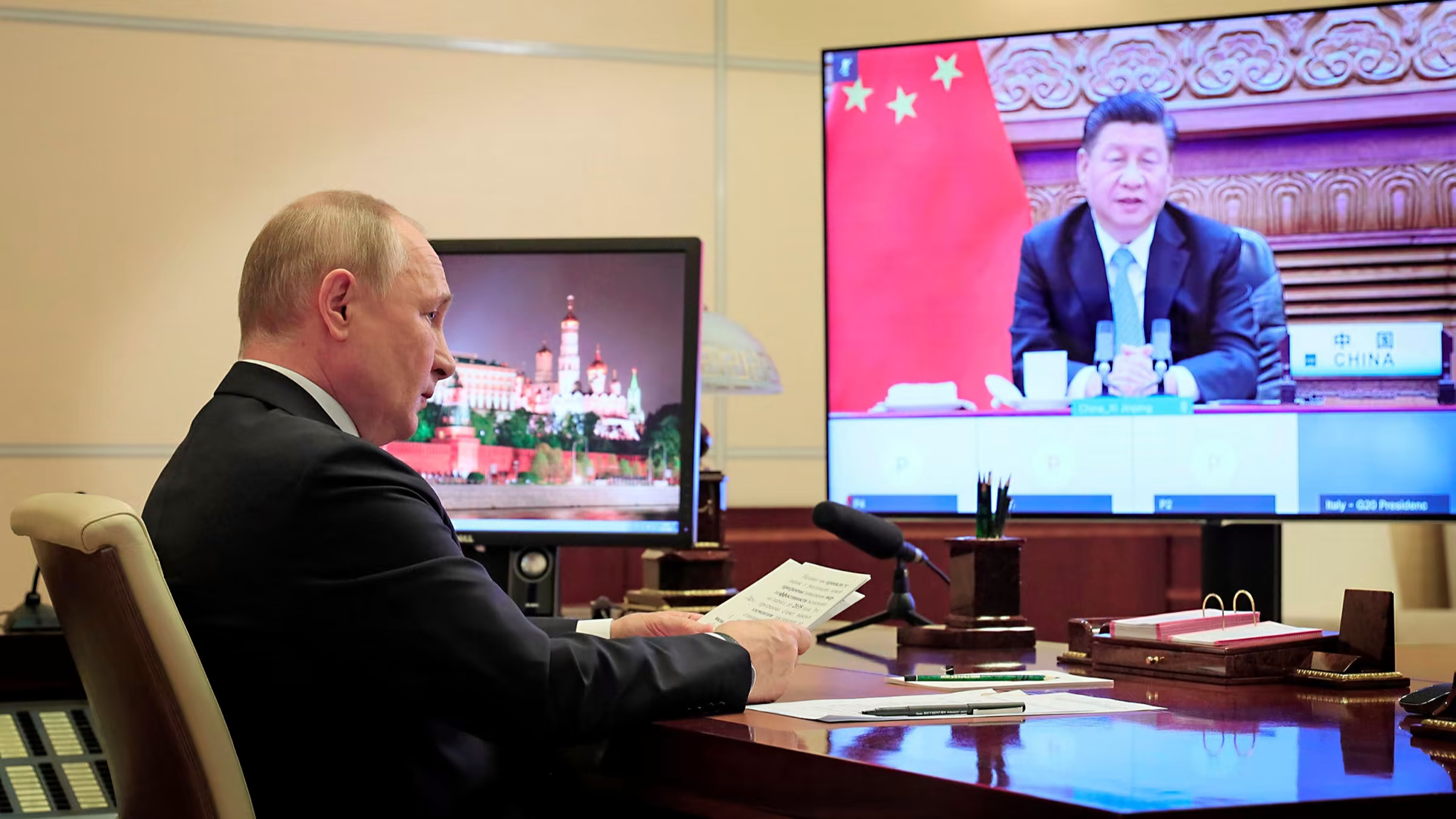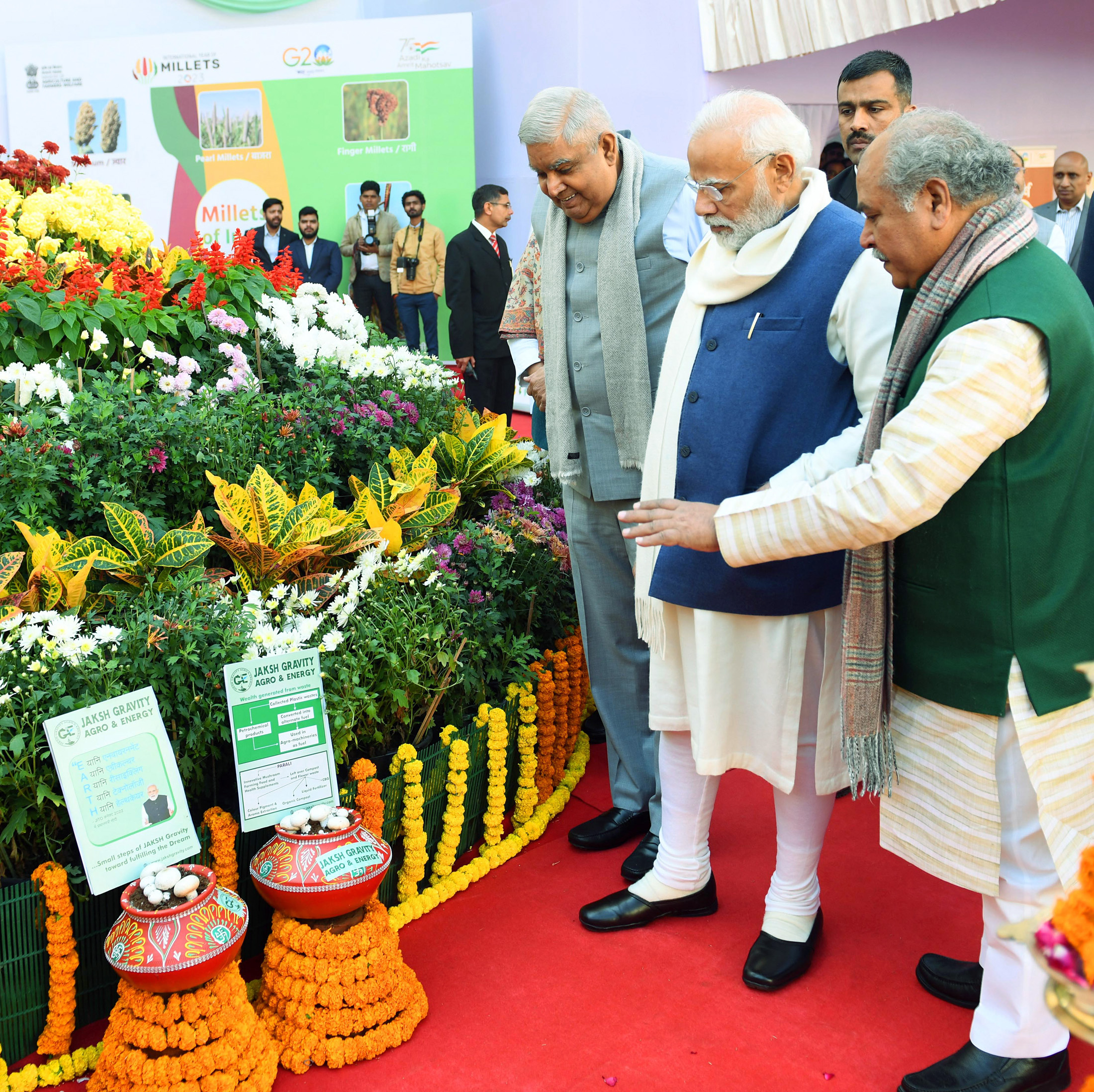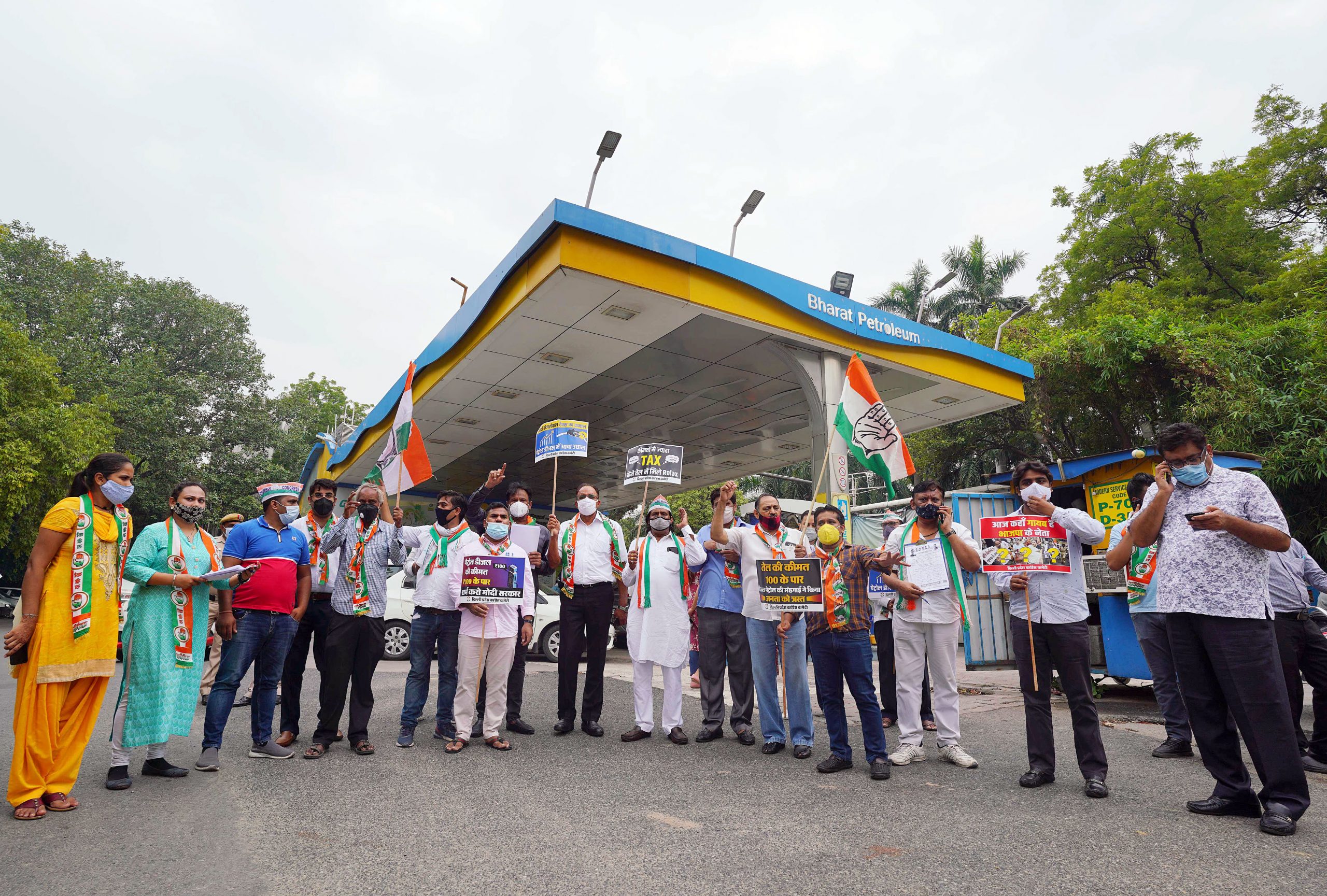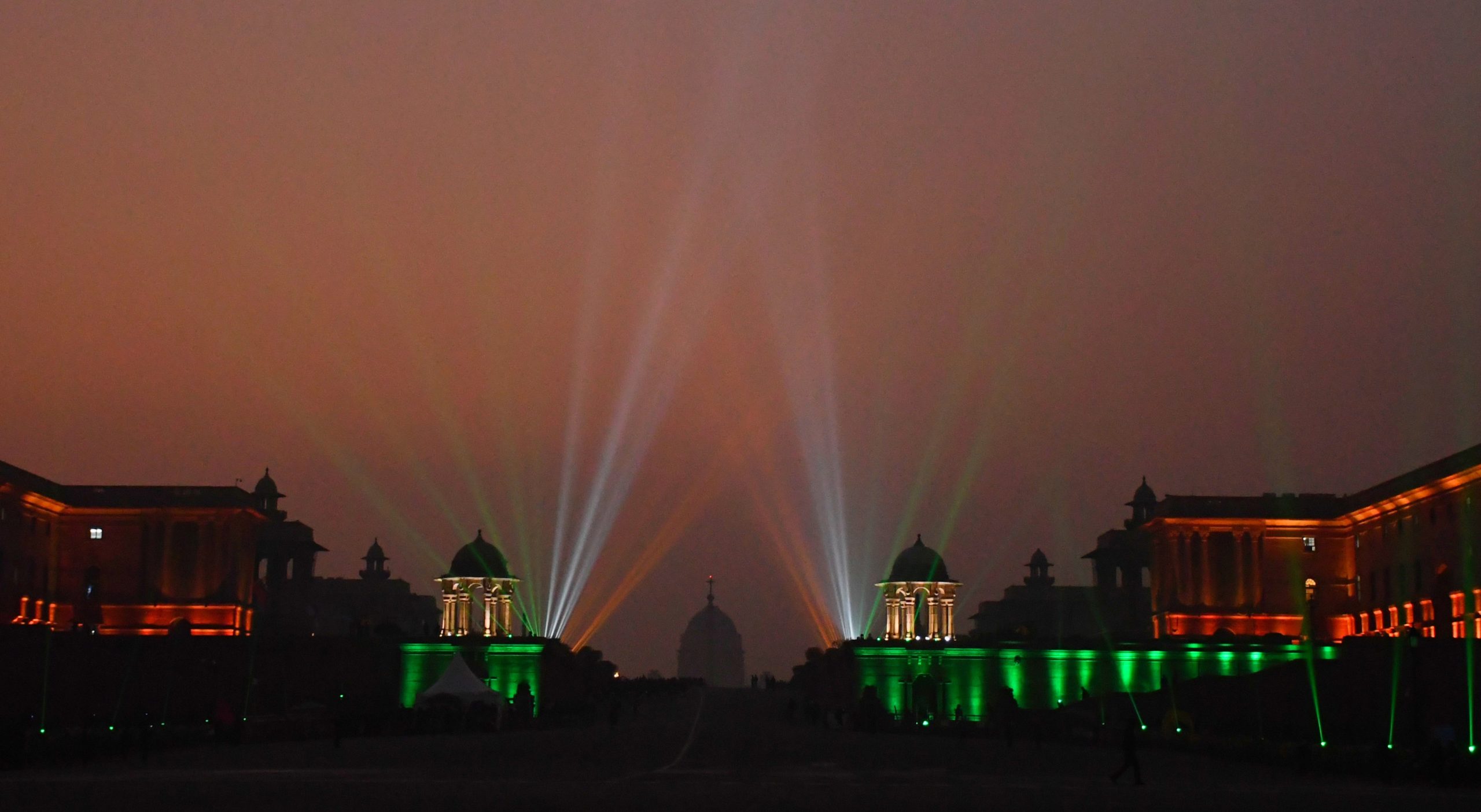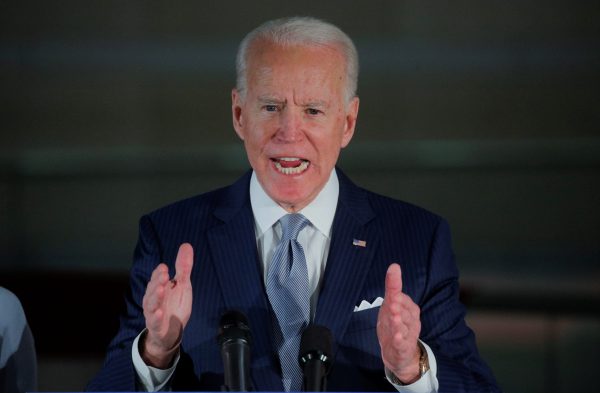The Russian military intervention though challenged the Chinese narrative of the Western countries being the prime aggressors. The Chinese media has peddled the dual narrative of vilifying the West and glorifying China’s supposed mediatory role in the crisis, even as the war continues to rage in Ukraine. The Chinese media’s coverage of the crisis has been less about Ukraine and Russia and more about China and the West
Mayuri Banerjee
Prior to Russia’s military invasion of Ukraine, Western media outlets reported that the Chinese government circulated guidelines to Chinese news media agencies explicitly forbidding publication of anti-Russia or pro-Western content. The guidelines required these agencies to use only those hashtags approved by the three state news organizations—People’s Daily, Xinhua News Agency and the state broadcaster, CCTV. A review of news reports in Chinese mainstream media like People’s Daily, CGTN, CCTV, Xinhua, People’s Liberation Army Daily and China News Service gives a sense of pro-Russian reportage.
In the initial phase of Russia’s military build-up near the Ukraine border, Chinese news media focused primarily on projecting Western interventionist approach and system of military alliances as the cause of the Russia–Ukraine tensions. They highlighted the purported divergences within major Western powers as a reflection of these countries’ unitary pursuit of geopolitical goals. Secondly, there was a marked eulogization of China’s supposed role as a force for stability in international politics.

‘The West is Lying and is Divided’
Categorizing US warnings of possibility of Russian invasion of Ukraine as “hype” and “propaganda”, Chinese news media charged the US of falsely exaggerating the risk of war and perpetrating tension and conflict in the region. An article in the Xinhua News Agency charged that the US supply of weapons to Ukraine under the pretext of Russian invasion was aggravating tensions between the two countries. It described NATO’s deployments to Eastern Europe in response to Russia’s military exercises as aggressive and warned the US not to ‘play with fire’.
In the aftermath of the telephonic conversation between Chinese Foreign Minister Wang Yi and US Secretary of State Antony Blinken on 27 January 2022, CGTN accused the Biden administration of causing panic and instigating conflict between Russia and Ukraine. An Editorial in CGTN stated that Russia made no military threat to Ukraine and instead accused the US and NATO of nibbling at Ukrainian territory to antagonize Russia.
Several reports titled “Western politicians amplify the idea that Russia is about to ‘invade’ Ukraine”, “The United States continues to incite the Russian President”, “The US concocted fake news to exaggerate the ‘Russian threat theory’” across popular media outlets like China News Service, CCTV News, Caixin conveyed the narrative that alleged US threat-mongering was causing tensions in the region. Mutual distrust between Kiev and Moscow, existing acrimony over Crimea, and Russia’s support to Ukrainian separatists, among other issues, were left out of Chinese news media’s assessments of the crisis.
In the wake of Russian military build-up prior to start of hostilities, Chinese news media sought to portray Western countries as divided and only striving to secure their respective interests. An article in CGTN stated that the Ukraine crisis exposed the cracks within the Western alliance and had failed to forge consensus in their response to Russian policies. Highlighting the alleged depth of the disagreements, Chinese media reported not only on trans-Atlantic divergences between the US and its European allies but also on differences of opinion among the European countries themselves.
An article published in People’s Liberation Army’s official media outlet, PLA Daily, argued that Germany and France, owing to their close economic cooperation with Russia “have a more rational attitude towards Russia, and have obvious differences with the United States on the Ukraine issue”.
At the same time, it argued that “Lithuania and other Central and Eastern European ‘New European’ countries have obvious doubts and fears of Russia, and have adopted more radical pro-US policies in terms of security”. Xinhua News Agency cited statements of American and European politicians to support the thesis. These statements included France’s call for dialogue with Russia, Germany’s reluctance to provide military aid to Ukraine and Croatia’s (a NATO member) suggestion to take into account Russia’s security considerations.
It is noteworthy that this negative press coverage of West’s policy approach and response towards Russia–Ukraine crisis fits into the larger Chinese narrative about the superficiality of the West-led international order. For long, Chinese experts have contended that major Western powers under the garb of protecting rules-based international order are brewing instability across the world through military interventions and military alliances, driven by their geopolitical ambitions.
In comparison, it is contended that Chinese foreign policy aims to forge consensus and stability through mediation and ‘win-win’ cooperation to shape global order. Incidentally, this narrative building has also constituted Chinese press coverage of several other events like the formation of the QUAD, the AUKUS submarine deal, and US withdrawal from Afghanistan. It is noteworthy that such type of narrative gained traction largely in response to the ‘China threat theory’ and a perceived need to promote Chinese perception of international relations that will enable the world to view China’s rise favorably.
‘China is the stabilizing force’
The Chinese news media’s coverage of the Ukraine crisis has highlighted alleged Western culpability while simultaneously emphasizing Chinese efforts towards resolving the crisis in an effort to help project China in a positive light vis-à-vis the Western countries. With China calling for adherence to Minsk Agreements signed between Ukraine and Russia in 2015, the Chinese media projected Beijing’s stance as guided by the principles of non-interference.
After Blinken’s talks with the Chinese Foreign Minister Wang Yi on 27 January 2022, CGTN suggested that while NATO was increasing tensions by reinforcing its military presence in Eastern Europe and the Black Sea, China was “playing a constructive role in promoting peace and solidarity in the region, calling for all sides to remain calm and refrain from hyping up tensions”.
After Russia launched the Ukraine invasion, the Chinese press carried limited coverage on Russian military operations and focused largely on Chinese efforts to mitigate the crisis. China Daily suggested in its editorials that Russia–Ukraine negotiations were being impeded by non-conciliatory stance of US and major European powers. Chinese calls for restraint and dialogue were contrasted with that of the US and the West, with commentaries arguing that the US was adopting hostile policy measures.
The provision of military aid to Ukraine by the US, among others and reinforcing of NATO’s presence in Eastern European countries and the Black Sea, were highlighted. Efforts by NATO members like Germany, France and Turkey to facilitate negotiations between Russia and Ukraine and Russia’s reluctance to cease hostilities despite calls for the same were hardly highlighted in this context.
Conclusion
Despite strict censorship of Chinese media and control over the flow of information, reports flag that Chinese public opinion is deeply divided about the nature and extent of Chinese support to Russian actions. In the context of both countries professing strategic alignment in early February, the Chinese media’s explicit endorsement of Russia’s actions in Ukraine could have projected China as a co-collaborator to the international community.
The Russian military intervention though challenged the Chinese narrative of the Western countries being the prime aggressors. The Chinese media has peddled the dual narrative of vilifying the West and glorifying China’s supposed mediatory role in the crisis, even as the war continues to rage in Ukraine. The Chinese media’s coverage of the crisis has been less about Ukraine and Russia and more about China and the West.
Mayuri Banerjee is Research Analyst at Manohar Parrikar Institute for Defense Studies and Analyses, New Delhi
Views expressed are of the author and do not necessarily reflect the views of the Manohar Parrrikar IDSA or of the Government of India.
This is the abridged version of the article which appeared first in the Comment section of the website (www.idsa.in) of Manohar Parrikar Institute for Defense Studies and Analyses, New Delhi on May 12, 2022
















